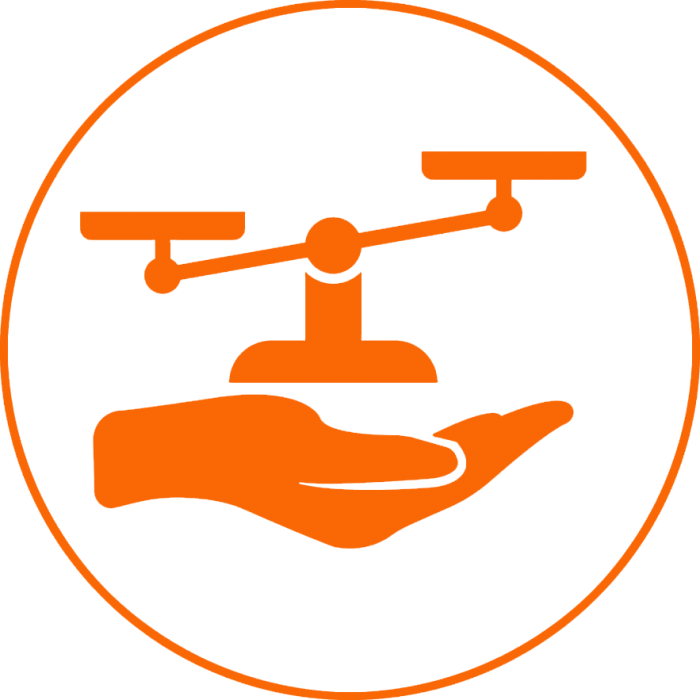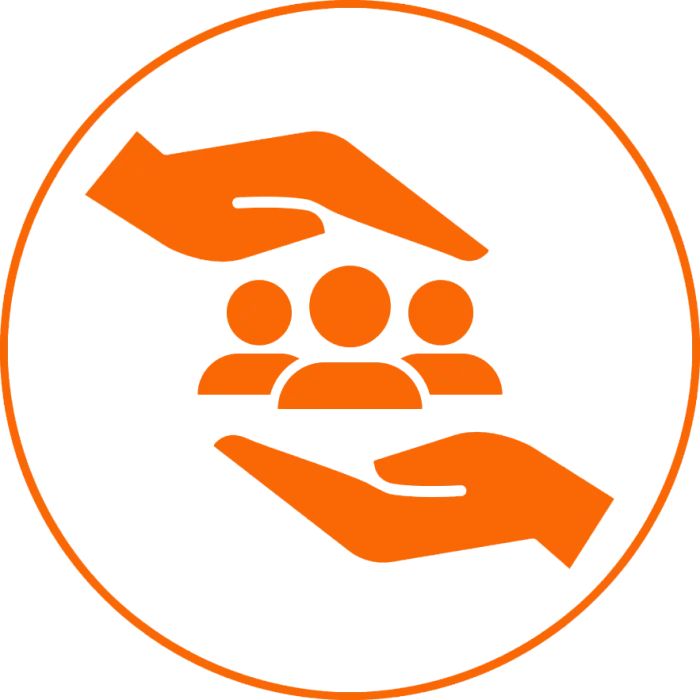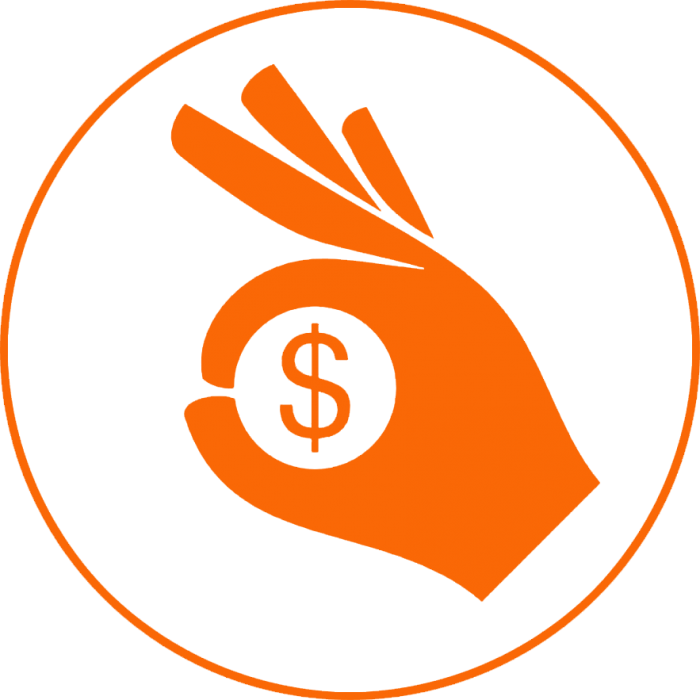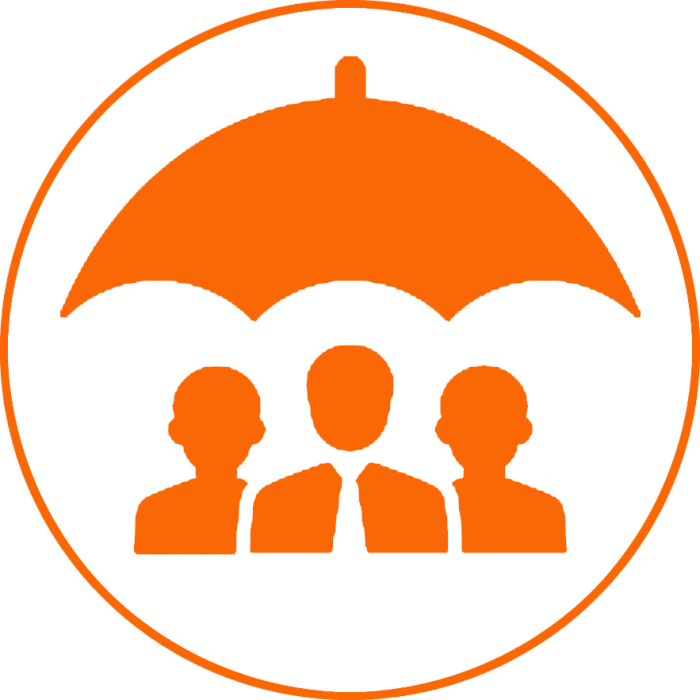How much does the Everest Base Camp Trek cost?

How much does the Everest Base Camp Trek cost?
how much does the Everest base camp trek cost? You can find the answer to this question in detail on this blog. Everest Base Camp is a world-famous trekking destination for trekking lovers. Mount Everest (8,848 m), the highest mountain in the world, attracts adventure seekers with its awe-inspiring charm.
If you are also planning an Everest Base Camp trek, you want to know how much it costs. You can see that the trip cost varies from company to company when you search on Google. Many factors make the price of a trek differ from company to company.
Yes, the cost of the Everest Base Camp Trek can depend on many factors. There is no fixed cost, but the Everest base camp trek cost ranges from $1100 to $4500. The total cost of the trek depends on your needs and preferences. So, first of all, we need to know what factors the price depends on. Some of the key factors that determine the cost of Everest Base Camp Trek are as follows:
Duration
The duration of the Everest base camp trek can affect the cost. The standard Everest Base Camp trek period is around 12–14 days. It is best to choose the trekking duration based on your preferences and fitness level. If you have good fitness and previous trekking experience, you can opt for a 12-day itinerary. It requires long hours of continuous walking on some days.
This itinerary suits those who enjoy a more active and intense trek. With this itinerary, you can deduct the cost of a 2-day guide, porter, food, and accommodation. But if you want a more relaxed pace with more rest days, the 14-day option may be more suitable.
Route and Itinerary
The route and itinerary are other factors that affect the cost of the Everest base camp trek. The most common route to Everest Base Camp is from Lukla to Everest Base Camp and back. But different ways and itineraries are also available for the Everest base camp. The cost varies according to the route and itinerary. You can also start the trek from Jiri and reach the base camp. But it takes you 20 days and costs more.
You can add Gokyo Lakes, Three Pass, and Base Camp to your itinerary. But adding these places also requires more days and costs more. So, you must choose the route and itinerary that suit you best to determine the cost.
Group or solo
Costs may also vary due to group or solo treks. If you join a group trek organized by a trekking company, the price per person is usually lower than a solo trek. Participants in a group trek can share expenses like transport, room, guide, and porter—tea houses charge per room or group, not per person.
You can share the hired guides or porters among the participants when trekking. Sharing guides and porters make the cost more affordable for each person. You have to bear the entire cost of hiring a guide or porter on a solo trek, which increases the cost. If budget considerations are a priority, joining a group trek is a popular option to cut costs.
Guide and Porter service
Fees for hiring guides and porters can affect the cost of the Everest base camp trek. Hiring a professional guide for the Everest trek is essential. The cost of a guide depends on their experience, qualifications, and level of service. Guides who are fluent in many languages can charge higher fees.
Porters help carry your heavy backpacks and gear during the trek. It lets you focus on enjoying the trip without a heavy load. The cost of porters depends on the number of porters you need and the duration of the trek. The price also depends on the weight of your luggage. If your baggage is heavy, you will need more porters.
Fees for guides and porters may vary depending on the trekking agency. Some include guide and porter fees in package prices, while others charge separately. So, it is necessary to clarify this with the agency beforehand.
Season
The trekking season in Nepal can also affect the cost of Everest Base Camp trekking. Spring and autumn are the trekking seasons in Nepal. During this time, the weather is usually stable, with clear skies and mountain views. Due to the large number of trekkers, there is a high demand for accommodation and services. It may lead to higher costs for trekking packages, lodging, and other services.
During these peak seasons, accommodations and flights may be limited. If you choose to trek during these seasons, it is essential to book in advance. Winter and monsoon are off-seasons for trekking in Nepal. Prices for trekking packages and accommodations may be lower during these seasons.
Accommodation and meals
The cost of food and accommodation affects the cost of the Everest Base Camp trek. Most trekkers stay along the trail at teahouses during the Everest base camp trek. Prices may vary depending on the type and quality of the teahouse.
Basic teahouses offer simple rooms with shared bathroom facilities. But some high-end lodges offer private rooms with attached bathrooms. The cost of high-end accommodations is higher than that of basic teahouses. Luxury hotels are also available in most places. So choosing accommodations according to your budget is better.
Most teahouses provide food for trekkers. Food costs may vary depending on the teahouse and type of food. Basic meals like dal bhat (traditional Nepalese food) or noodles are often affordable. But meals with meat, international cuisine, or special diets are more expensive. Accommodation and food cost more at higher altitudes. It is due to the logistical challenges of transporting supplies to high altitudes.
Extra services
Some extra costs may arise during the Everest base camp trek, affecting the overall cost. Tea, coffee, and cold drinks can add to the price. If you don’t have suitable trekking gear, you must rent or buy it. Trekking boots, sleeping bags, down jackets, and poles add to the cost. These costs may vary depending on the quality and availability of the gear.
Travel insurance is mandatory to cover trekking activities and possible emergencies. The cost of the insurance premium will depend on the coverage you choose. Personal expenses may include hot showers, Wi-Fi access, and charging for electronic devices. These costs may vary depending on your preferences and availability.
Trekking agency
The type of trekking agency can affect the cost of the Everest Base Camp trek. International tour operators are reputable companies that operate worldwide. Due to their extensive service and infrastructure, their prices are higher than those of other operators. Many local trekking agencies in Nepal specialize in organizing treks. They have guides and porters with good knowledge of the trekking area. Local agencies have direct access to local resources and can offer competitive prices.
You can also find budget operators who focus on providing low-cost options. They offer essential services at low prices. There are also luxury operators who provide premium services. They offer luxury lodges, fine dining options, and personalized service. The cost of such operators is high because they provide luxurious service.
You may like: Pikey Peak trek – 8 days, itinerary, package, cost
breakdown of the cost of the Everest base camp trek
Do you want to know the cost of each head for the Everest Base Camp Trek? If yes, then the following is the breakdown of the total cost for all different subjects:

Cost in Kathmandu
For the Everest base camp trek, you must spend at least two nights in Kathmandu. Kathmandu expenses include airport transfers and hotel accommodations. In Kathmandu, you can choose hotels according to your level. You can get economy hotels for 10 dollars, while 5-star hotels must charge around US$450 plus costs per night.
If you want to explore Kathmandu on a free day, extra expenses for the tour will add up. This additional cost depends on the services you choose. You can visit various world heritage sites in the Kathmandu Valley. It costs around $50 to $150. This cost includes your transportation, entrance fees, and meals.
Cost of transportation
You can reach Everest Base Camp from Kathmandu by flight or road transport. Yet, flying from Kathmandu to Lukla is the best way to start the trek. Lukla is the gateway to the Everest region, and most trekkers begin from there. Kathmandu-Lukla round-trip flights cost $360 to $380 per person. Fares may vary depending on weather, availability, and the airline. The guide’s airfare for the round trip is $130 per person. You don’t need to take porters from Kathmandu; you can hire them from Lukla.
Remember that these domestic flights allow only 10 kg of baggage. So, you can leave your unnecessary belongings at the hotel in Kathmandu. It is best to book your flight as early as possible, as most flights are full during the trekking season. Arrival and departure transportation costs approximately $60.
Trekking permits cost
Everest Base Camp is not a restricted area, so you don’t need a special permit, but other permits are required. You require a Khumbu Pasang Lhamu rural municipality entrance permit. The fee for this permit is USD 20 per person. Since this permit is unavailable in Kathmandu, you must get it in Lukla.
Another permit you need for the trek is the Sagarmatha National Park Entry Permit. You can get this permit from the Nepal Tourism Board office in Kathmandu. You can also get it at the entrance of Sagarmatha National Park for convenience. The national park entry permit costs approximately $30, including 13% VAT.
Cost of accommodations
Along the trekking trail, you can find everything from simple teahouses to luxurious lodges. If you want to cut costs, you can choose teahouses for accommodation. A teahouse is a type of small lodge run by locals. These teahouses provide food and accommodation to trekkers. Teahouse rooms are basic, usually with two beds, pillows, and blankets. Extra blankets are available if it’s cold, or you can use your sleeping bag.
The teahouses have a large dining hall where you can eat and relax with other trekkers. A fireplace is used to heat the entire room during dinner. The average room cost is $5 per night. But the price is higher in higher-altitude places. The average accommodation rate in Lobuche is $7, while Gorak Shep can reach $10. Apart from the room during the stay, there may be some extra charges.
Most teahouses along the trek offer hot showers for an extra fee. Depending on the location, a hot shower or bucket of hot water can cost anywhere from $3 to $7. Please note that hot showers may be limited, especially at higher altitudes.
Electricity is usually available, but it is limited. Charging electronic devices such as cameras and phones incurs extra costs. Depending on the location, battery charges can range from $2 to $5 per hour. Carrying spare batteries for cameras and mobile devices is always a good idea.
Internet connections are generally available in some tea houses, but speed may vary. You may have to pay some fees in places where internet facilities are not available, or the speed could be faster. You may need to buy an internet card or voucher separately. Costs for Wi-Fi access can range from $2 to $5 per hour.
Cost of food and water (breakfast, lunch, and dinner)
You can find teahouses and luxury hotels on the Everest Base Camp Trail for food. Choosing teahouses is a good option if you want a budget-friendly trek. Food costs may vary depending on the location, tea house, and specific items you choose. Food costs more at higher altitudes than at lower altitudes.
Most of the tea houses serve breakfast, lunch, and dinner. Tea houses usually offer Nepali, Indian, and Western dishes. Menu items generally include dal bhat, momo (dumplings), pasta, noodles, fried rice, and soup. Beverages include tea, coffee, hot chocolate, soft drinks, and bottled water.
Dal bhat is the staple food on this trail. Prices start at $5 at the lowest altitude of the trek and can go up to $12 at the highest. A liter of bottled water costs between $1 and $4, depending on the location. You can expect to pay $1 to $3 for a cup of tea or coffee and $1 to $5 for a soft drink. Your daily food and drinking water expenses are about $30 to $40.
Cost of guide and porter
Hiring a guide and porter is always helpful when trekking to Everest Base Camp. Choose an excellent trekking company to hire reliable guides and porters. A good trekking company can provide you with experienced trekking guides. Ensuring that the trekking guide has a license is also essential.
The guides are locals of the trekking area, so they are familiar with the trekking trail. They can provide good information about local culture, customs, and festivals. Guides help you arrange accommodation and food and provide security during the trek. Having a porter carry your luggage on the Everest Base Camp trek would be best.
The average cost of a guide ranges from $30 to $35 per day. This cost usually includes their salary, accommodations, meals, and insurance. Hiring a porter costs between $20 and $25 per day. It includes their salary, lodging, food, and insurance. Per rules, porters can carry up to 20 kg of weight while trekking in Nepal. Usually, trekking agencies provide one porter for two people, and you can share the porter with two people. If your luggage weighs more, you can hire extra porters.
Cost of trekking equipment
Before heading out for a trek, you must have the necessary equipment and gear. The equipment’s price may vary depending on its quality and brand. The cost of trekking equipment can range from $300 to $600.
The essential equipment for trekking needs to be of high quality. Check out the complete packing list and learn about the items you need for the trek. Here is a list of some of the trekking equipment and an approximate range of prices:
Trekking Boots:
Good-quality trekking boots are essential for rugged and high terrain. Prices can range from $70 to $200 or more, depending on the brand and features.
Backpack:
A durable backpack with around 40–60 liters of capacity is essential. Prices can range from $70 to $1,500, depending on brand and size.
Sleeping bag:
It would be best to have a warm and lightweight sleeping bag suitable for cold temperatures. At higher altitudes, it gets colder, so choosing the right sleeping bag is essential. We recommend sleeping bags with temperatures of -10°C to -20°C. Prices can range from $100 to $300 or more, depending on quality and temperature rating.
Down Jacket:
A down jacket is essential to keep the body warm at high altitudes. Prices can range from $100 to $300 or more, depending on the brand and insulation quality.
Trekking Pants and Shirts:
You need 2-3 pairs of quick-drying, lightweight, comfortable trekking pants and shirts. Depending on the quality, prices can range from $20 to $70 per piece.
Base Layers:
Thermal base layers are essential for the upper and lower bodies to avoid the cold. Prices can range from $20 to $70 per piece.
Fleece Jacket:
A warm and breathable fleece jacket is useful for layering. Prices can range from $30 to $100 or more, depending on quality.
Trekking Poles:
Trekking poles can provide stability and reduce stress on the knees. With its help, it is easy to walk uphill. Prices can range from $20 to $80 or more, depending on the brand and features.
Hats and gloves:
Warm hats and gloves are essential to protect against the cold at high altitudes. Prices can range from $10 to $40 or more, depending on quality.
Other Essentials:
You will also need sunglasses, sunscreen, a headlamp, a water bottle, and toiletries. The price of these items may vary.
Note: Renting can be cost-effective, especially for items you won’t frequently use after the trek. Renting items like sleeping bags and down jackets is a good idea to keep your costs down. You can also rent some items in Kathmandu, Lukla, or Namche Bazaar. But the rent is more expensive in Lukla or Namche Bazaar than in Kathmandu. Therefore, we suggest you rent the necessary items from Kathmandu.
Travel insurance costs
Insurance is optional when traveling in Nepal. However, it is mandatory, especially for high-altitude trekking. So, it is better to have travel and medical insurance for the Everest base camp trek. Note that your insurance policy should also cover helicopter and other transportation expenses.
Trekking to Everest Base Camp is uncertain. Due to the altitude and cold weather, anything can come up during the trek. You may need to be rescued by helicopter and taken to a reputable hospital for medical treatment. Choose a reliable insurance company whose policies cover all aspects of travel insurance.
Travel insurance for trekking up to 6000m altitude costs around $150 for 30 days. Yet, the insurance cost depends on your age, nationality, and the duration of your trek. Most trekking companies do not provide insurance services, so you must arrange travel insurance in your country. Note that guides and porters are insured by the trekking company you choose.
Cost of a Nepal visa
Citizens of all countries except India need a visa to enter Nepal. The fee for the visa depends on the duration and type of visa you need. You can get a visa on arrival at Kathmandu International Airport. Note that citizens of some countries may not be eligible for an on-arrival visa in Nepal. They must obtain a visa from their country’s Nepalese embassy or diplomatic mission. It is essential to check the application process based on your nationality before visiting Nepal. Nepal visa fees are as follows:
$30 for a 15-day multiple-entry visa
$50 for a 30-day multiple-entry visa
$125 for a 90-day multiple-entry visa
You can extend your visa by paying USD 3 for an extra day. In case of a delay, you must pay an additional USD 5 per day as a late penalty. Most Everest Base Camp treks take around 12 to 14 days, so it is best to get a 1-month visa. These fees are subject to change, so check the official website of the Nepal Immigration Department for confirmation.
Tips
Tipping for guides and porters is a common practice when trekking in Nepal. While tipping is not mandatory, it is a way to show appreciation for services. The amount of tips you give is up to you. However, there are some general guidelines for tipping guides and porters.
You can decide to tip guides based on their level of service and expertise. However, guide tips range from USD 10 to USD 20 per day. Porters play an essential role in carrying your luggage during the trek. Tipping the porter as a group rather than one by one is customary. You can allocate around USD 5 to USD 10 per day for porters.
Visit also: Everest classic terk – 20 Days, cost, itinerary, package
Types of trekking operators
There are two main types of trekking operators in Nepal. International trekking operators and local trekking operators. Let’s explore the prices and services of both types of operators:

International Trekking Operators
International trekking operators are based outside Nepal. They may have representatives in Nepal. But their primary operations and decision-making processes are managed from abroad. They have a wide range and cater to travelers from different countries. These operators often serve a diverse international clientele and are in many countries. They offer services not only in Nepal but also in other destinations around the world.
Often, the pricing structure differs between international and local operators. International operators often have high overhead costs due to their global operations. Their service package is higher than the local operator’s. They usually offer three types of packages that you can choose according to your budget.
International Budget Trek Package
The Everest Base Camp budget package provides basic, essential services. Under this package, tour operators arrange basic teahouse accommodation along the trekking route. A teahouse is like a small guesthouse. It provides travelers with basic accommodations and food, which locals run. It offers a cost-effective option for trekkers.
This package offers basic and simple rooms with shared bathrooms and limited amenities. Food is generally basic, consisting of local Nepalese cuisine and simple Western options. A cup of tea or coffee is included with each meal. Moreover, other drinks are not included. International operators charge $1800 to $2500 per person for this budget trek package. It is the cheapest among the packages international operators offer, but service-wise, the price is high.
International Standard Trek Package
You can opt for the standard package option for better service than the budget package. This package offers food and accommodation at the best tea houses on the trekking trails. Meals are served on a full-open menu basis. They provide standard rooms with attached bathrooms in nice teahouses.
The package includes unlimited tea and coffee. You can expect hot water for bathing. International operators charge $2000 to $3000 per person for this standard trek package. This package may appear as an alternative to luxury, but it is expensive.
International Luxury Trek Package
This package usually offers enhanced features and services compared to standard trekking options. Luxury packages include luxury lodges or high-end tea houses along the trekking route. These accommodations provide more comfortable beds, private bathrooms, hot showers, and other amenities.
The package usually includes high-quality foods. You can expect a wide range of menu options for local and international cuisines. Luxury packages may have extra support staff to make the trek more comfortable. International operators charge $4,000 to $7,000 per person for this luxury trek package. Yes, you have to pay more to get better service, but many international operators charge extra.
Local trekking operators
Local trekking operators are companies based in Nepal. They specialize in organizing different types of treks within the country. These operators are usually owned and operated by local individuals or communities. They have in-depth knowledge and expertise about culture and trekking areas.
Local operators have a strong network of local guides, porters, and accommodation providers. These operators are often committed to sustainable and responsible tourism practices. The packages offered by local tour operators are cheaper than those provided by international operators.
Local operators have lower overhead costs than international operators. So, the price of the Everest base camp trekking package offered by local operators is lower. Local operators also offer three types of packages that you can choose from as per your budget.
Local Budget Trek Package
The budget trek package includes essential services. Under this package, the local operators arrange basic teahouse accommodations. The tea house is like a small guesthouse run by locals. It provides basic accommodation and food to trekkers. This package is a cost-effective option for trekkers.
The package offers basic and simple rooms with shared bathrooms and limited amenities. Food usually includes local Nepali dishes and simple Western options as well. Local operators charge US$1000 to US$1500 per person for this budget trek package. Some local trekking operators may even charge US$1800 to US$2200 for this package.
Local Standard Trek Package
Local operators offer standard package options for better service than budget packages. This package provides food and accommodation services at the best tea houses. Meals are served on a full-open menu basis. You can expect standard rooms with attached bathrooms in the finest teahouses.
The package includes unlimited tea, coffee, and soft drinks. It also includes hot water for bathing, as it gets cold in the Everest region. Local operators charge US$ 1500 to US$ 2000 per person for this package.
Local Luxury Trek Package
The luxury package offers enhanced features and services compared to the standard package. This package includes luxury lodges or high-end tea houses along the trekking route. The package provides comfortable beds, private bathrooms, hot showers, and many other amenities. You can expect a menu with a wide range of local and international cuisines.
There are extra support staff to make the trek more comfortable. Local operators charge US$2500 to US$3000 per person for this package. The services provided by international and local operators are the same. Although international operators often charge more for the same service package,
Trek with a guide and porter service.
You can hire a guide and porter for the Everest Base Camp trek through a trekking agency. It is cheaper to trek to Everest Base Camp than to take a complete package. You will hire a guide from Kathmandu and also pay for the guide’s flight. But the company will arrange for the porters to meet in Lukla, so you don’t have to pay for the porter’s flight.
You can also hire a guide from Lukla. The advantage of hiring a guide from Lukla is that you don’t have to pay for the airfare on Lukla flights. But it will be easier and safer if you have a guide from Kathmandu with you.
You can also share a guide and porter (two trekkers with one porter). Sharing guides and porters in groups will reduce costs. If you only hire a guide and porter, you must pay for food and accommodation. The guide will help you arrange food and accommodation at the teahouses along the route.
Costs:
Guide fee: 14 * $35 = $490
Courier fee: 14 * $25 = $350
Guide Flight Fare: $150
The total cost is $990, but if there are two people, the total cost is only $495.
Note: This cost does not include your meals, accommodations, airfare, or permits.

Trek with a guide service
If you can carry your luggage, you can trek to Everest Base Camp without a porter. A trek with a guide and without a porter is another trekking style. Hiring only a guide cuts some costs—a total of $705 for 14 days, including guide hire and airfare.
A tip is not included in the package, and you can offer it at the end of the trek. You cannot have a comfortable trekking experience with heavy luggage. So, we recommend you hire a porter for a better trekking experience.
Earlier, you could do solo trekking in Nepal, but now you can’t. Yes, trekking in Nepal without a guide is currently banned. Natural disasters like sudden weather changes and landslides are more likely in remote mountainous areas. Such natural disasters pose a risk to solo trekkers unfamiliar with the area’s conditions.
Every year, around 10 to 15 trekkers go missing while trekking in Nepal without a guide. Most of the missing are FIT (Free Independent Trekkers), which was a serious matter. Independent trekkers can get lost or feel unsafe without a guide. So, it has been decided to have a mandatory guide while trekking in Nepal.
Note that the package trek cost usually does not include trekking equipment, travel insurance, tips, a Nepal visa, or a hotel in Kathmandu.
You May Like: 5 Best Short Trks Near Kathmandu Valley
Stay away from cheap Everest base camp operators
There are also some cheap Everest base camp operators but stay away from them. Their offer may look attractive, but they cannot provide safe and reliable service. Everyone wants to save money as much as possible, but it is only sometimes good to buy the cheapest product to save money. Booking a trek with cheap operators can come with certain risks and drawbacks. Here are some reasons why you should be careful when considering cheap operators:
Security concerns:
Cheaper operators can cut costs by compromising on security measures. They may use inexperienced guides and outdated equipment, putting you at risk. But during a challenging trek like Everest Base Camp, safety must be a top priority. Low-budget operators need more approaches to security measures.
Lack of proper permits and licenses:
There are various permits you need for Everest base camp trekking. Cheap operators can bypass these requirements, which can lead to legal issues. But reliable operators ensure the trek by obtaining all necessary permits and licenses.
Poor Guide Services:
Only experienced guides can enhance the trekking experience to a great extent. A qualified guide can provide valuable insights and ensure your safety. Cheap operators may use guides who need proper training. Such guides must gain language skills and become familiar with the trekking route. These operators usually use something other than permanent staff. They use low-paid freelancers with little or no experience or training.
Poor-quality accommodation and food:
Suitable accommodation and nutritious food are essential during trekking. Trekking to Everest Base Camp is physically demanding and requires significant energy. A comfortable room is necessary for proper rest after long hours of hiking. Comfortable accommodation and quality food can enhance your trekking experience. But cheap operators may offer you low-quality accommodations and food to cut costs. Poor-quality accommodation and food may not provide an excellent trekking experience.
Limited or no support services:
Reliable trekking operators often offer extra support services. They have established a good network with other service providers. It allows them to provide a wider range of support services.
But cheaper operators may need more support. They may need more resources to provide comprehensive support services. Lack of such support can make treks challenging and dangerous in high-altitude environments. Low-budget operators may reduce emergency evacuation arrangements or hire extra staff to cut costs.
Lack of Environmental and Cultural Responsibility:
Sustainable and ethical trekking is essential to preserving the pristine beauty of nature. It also supports the livelihood of local communities. Reputable operators focus on environmental and cultural aspects that contribute to local communities.
But cheap operators don’t focus on preserving local cultures and environments. They need to be well aware of the concept of responsible travel. Due to this, the area is being polluted by dumping garbage.
Poor customer reviews and a lower success rate
Reputable operators have positive customer reviews, and the success rate is also high. But with low-budget operators, base-camp achievement success rates are always low. Especially for beginners, the chances of success in reaching base camp are very low. Choosing a cheap operator without proper research can spoil your trekking experience. So, we recommend not falling for low prices for a successful trek.
Money-saving tips for the Everest base camp trek
1. Prioritizing safety and quality is essential when planning an Everest Base Camp trek. Adopt some ways to save money without compromising your experience. Here are some money-saving tips to consider:
2. Research different trekking operators and compare their prices. Choose a good operator that offers competitive rates without compromising safety and quality.
3. If you are an individual, join a group trek. Joining a group trek can help keep costs down. Expenses such as guides, porters, and accommodations are shared among participants.
4. Consider trekking in the off-season rather than the peak season. Monsoon (June to August) and winter (December to February) are off-seasons for trekking in Nepal. During these seasons, trekkers are low; some operators offer discounted or special offers. But, be aware of the potential challenges that may arise due to the weather.
5. If you have trekking shoes, clothes, and a backpack, then bring them along. Bringing them along rather than renting or buying new items saves money. If not, then buy it. But even if you don’t have a sleeping bag and a down jacket, renting is better than buying. But make sure your gear is suitable for the Everest base camp trek and is well maintained.
6. Choose a teahouse for food and accommodation on the trail. A teahouse is like a basic lodge that provides food and accommodation for the trekkers. Choosing a teahouse instead of luxury lodges or camping can reduce costs. But keep in mind that teahouses are simple in terms of amenities.
Pack some snacks and water purification tablets. You can buy snacks and bottled water on the trail, but the prices are high. So, you can bring along light snacks like protein bars, nuts, dry fruits, muesli, and chocolate.
7. Do not spend money on alcoholic beverages while trekking. Avoid alcohol not only to save money but also for your health. Alcohol consumption in a high-altitude environment can cause serious symptoms.
8. If you have enough time, drive to Salleri or Jiri instead of flying to Lukla. The transportation cost of Salleri Drive is less than flying to Lukla. You must hire a jeep or a private vehicle for the salary drive. When traveling in a group, it is advisable to share the transportation costs.
9. Bring extra batteries and power banks to charge electronic gadgets. Electricity availability becomes more limited at higher altitudes. Many teahouses provide electricity through solar panels or generators, which may only be available for an extra fee.
10. Choosing a vegetarian diet can save you some money. In the Everest region, meat is more expensive than vegetarianism. Eating meat at high altitudes can also be challenging to digest, so it is better to choose vegetarian food options. Stick to dishes that include locally available vegetarian ingredients. These dishes are cheaper.
11. Use Nepali currency instead of foreign currency. Paying in Nepali currency can be more cost-effective. Prices quoted in foreign currencies may have higher exchange rates than prevailing rates. By using Nepali currency, you can ensure a fair price and avoid unnecessary overcharging. You can exchange money at Thamel in Kathmandu.
Everest Base Camp Trek Itinerary
1st Day: Fly Kathmandu to Lukla (2,840 m) and start the trek to Phakding (2,610 m)—a 4-hour walk.
2nd Day: Phakding to Namche Bazaar (3,440 m): 6 hours walk
3rd Day: Free day at Namche Bazaar
4th Day: Namche Bazaar to Tyangboche (3,860 m): 5 hours walk
5th Day: Tyangboche to Dingboche (4,410 m): 5 hours walk
6th Day: Rest day at Dingboche
7th Day: Dingboche to Lobuche (4,910 m): 5 hours walk
8th Day: Lobuche to Everest Base Camp (5,364 m) and Gorakshep (5,140 m)—8 hours walk
9th Day: Gorakshep to Kala Patthar (5,545 m) and Pheriche (4,240 m)—7 hours walk
10th Day: Pheriche to Phortse (3,810 m): 5 hours walk
11th Day: Phortse to Namche (3,440 m)—5 hours walk
12th Day: Namche to Phakding (2,610 m)—6 hours walk
13th Day: Phakding to Lukla (2,840 m)—4 hours walk
14th Day: Fly Lukla to Kathmandu in 45 minutes.
Odyssey Treks offers EBC trek packages at an affordable cost with quality service. Join Odyssey Treks and make the Everest base camp trek in Nepal a lifetime memory. Feel free to contact info@odysseytreksnepal.com for more information.
Visit also: Everest chola pass trek – 16 Days, itinerary, package, cost







